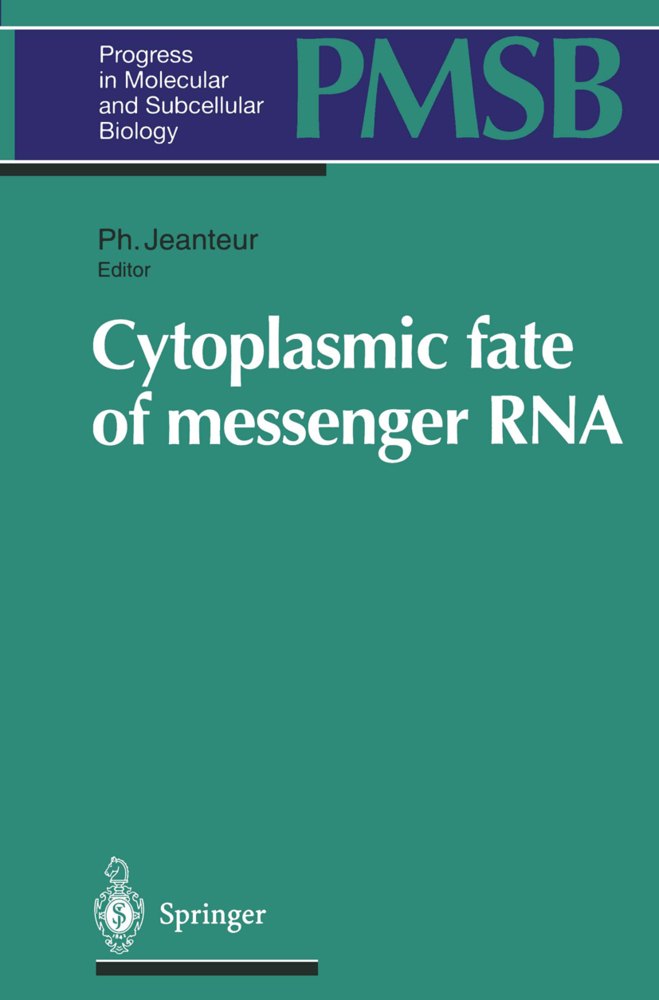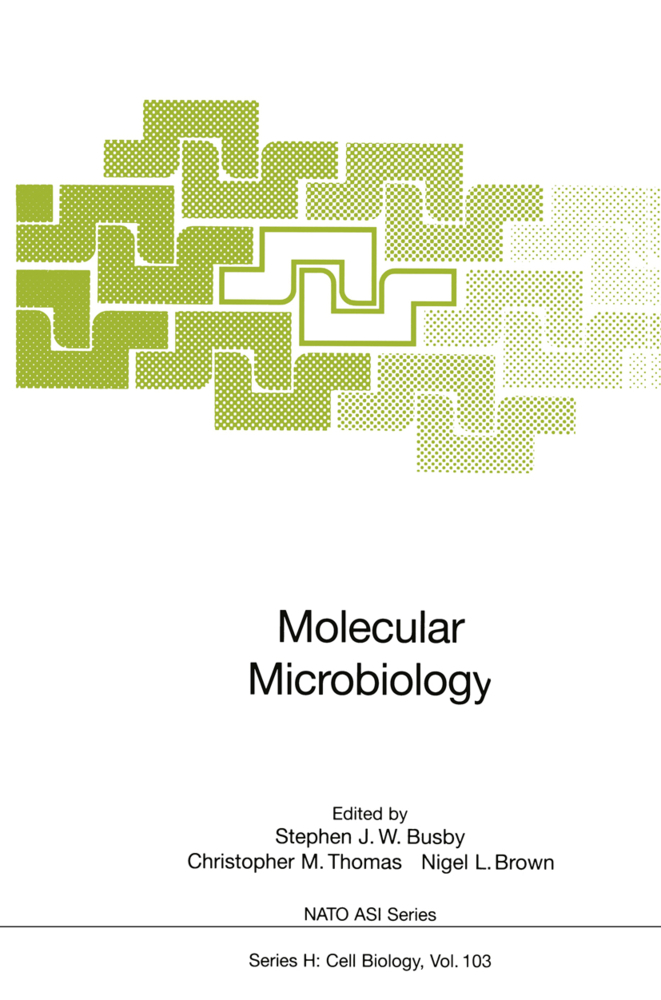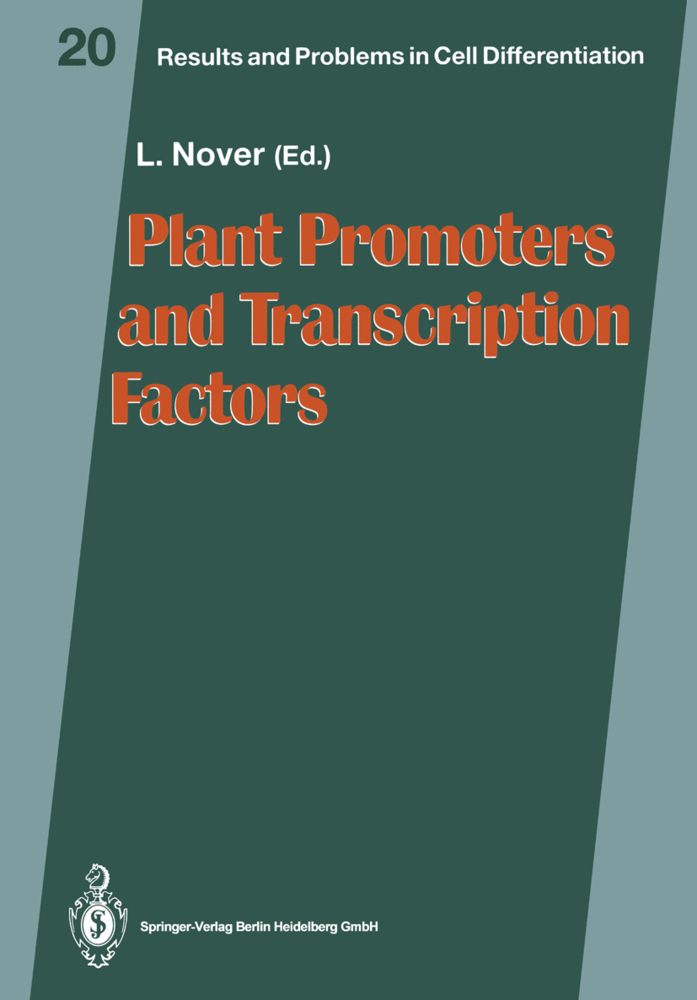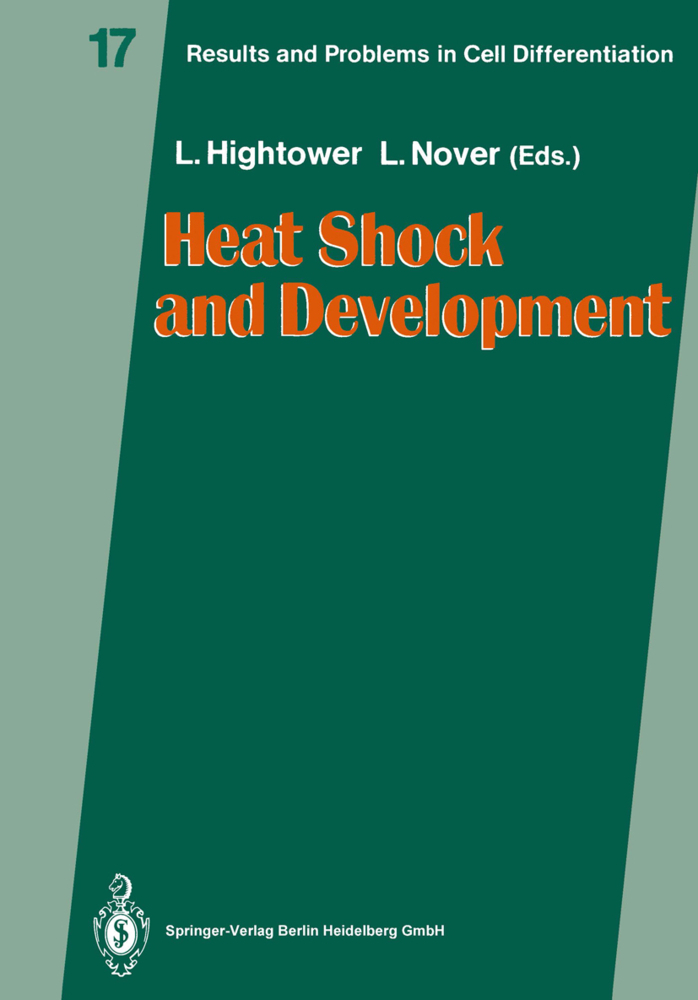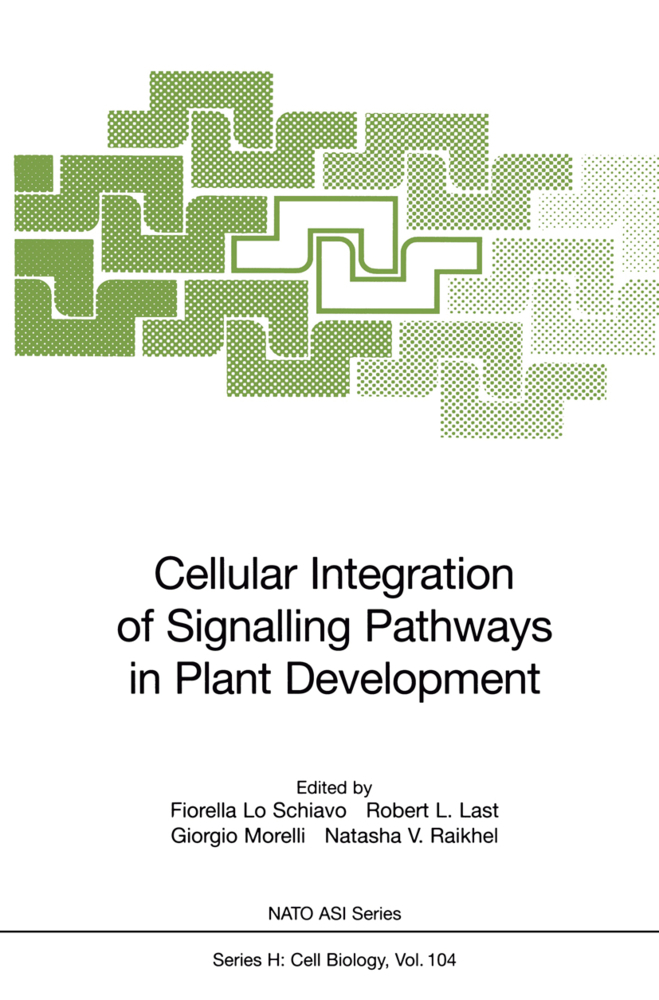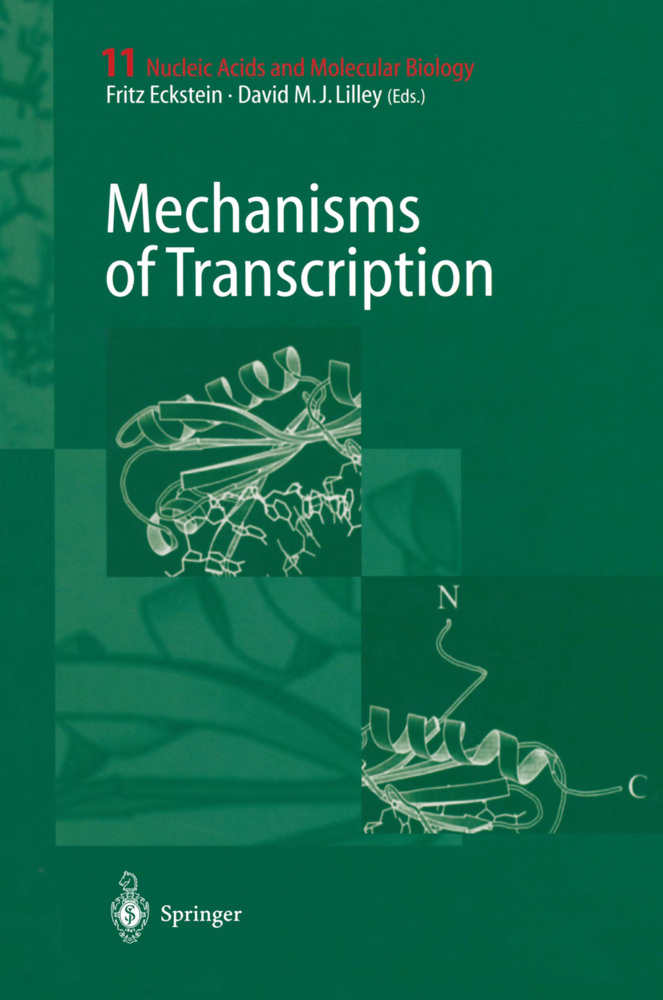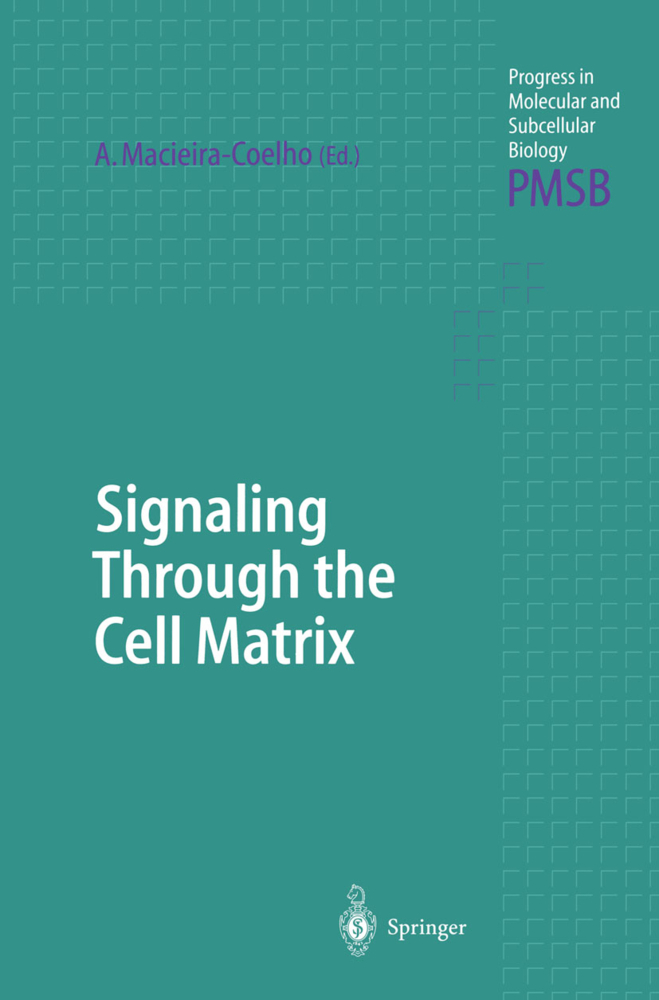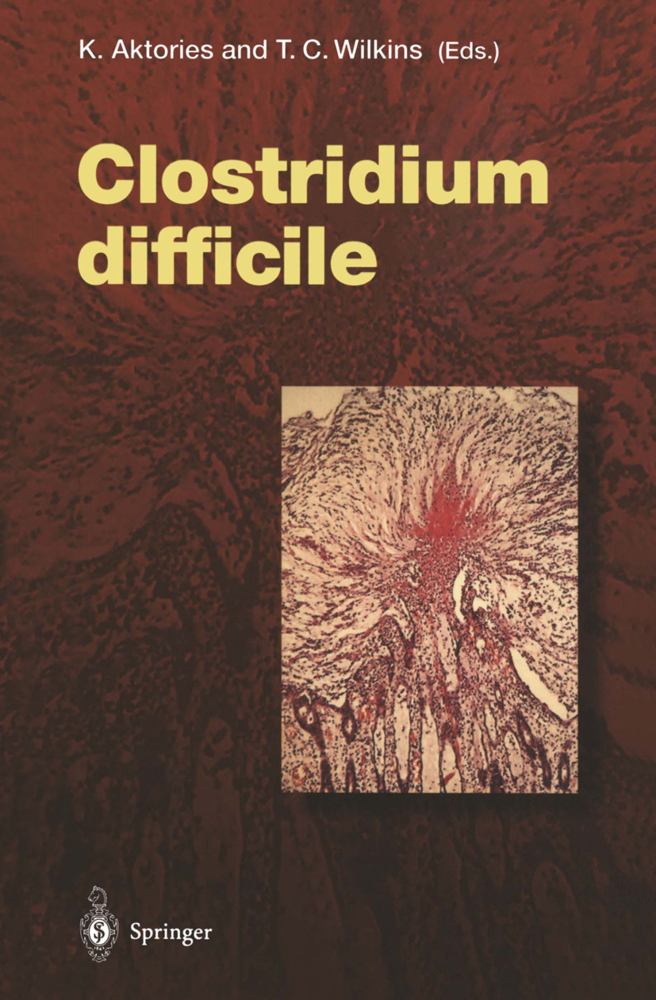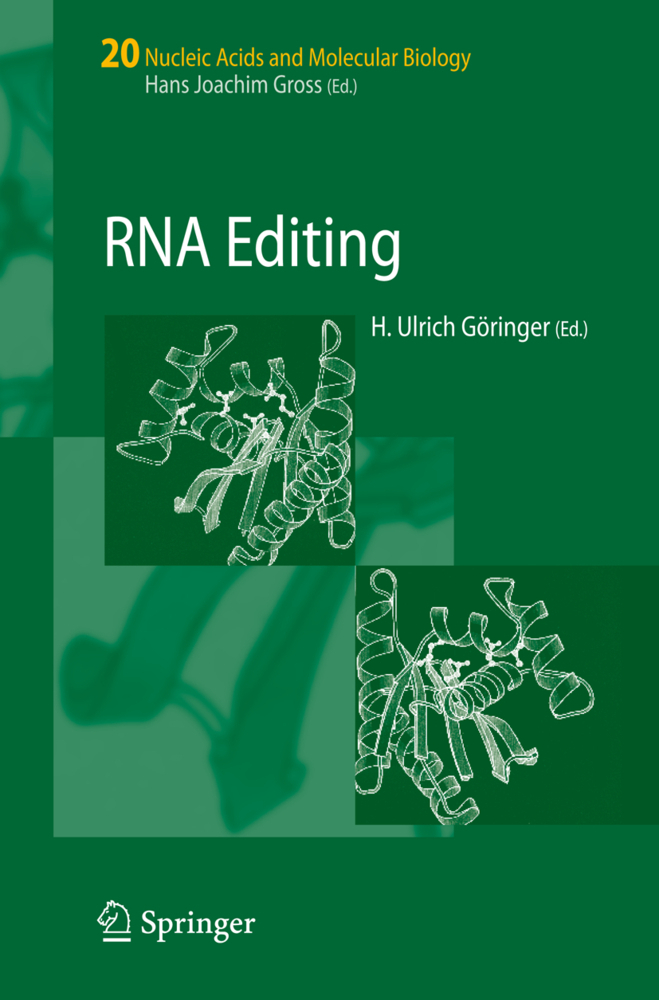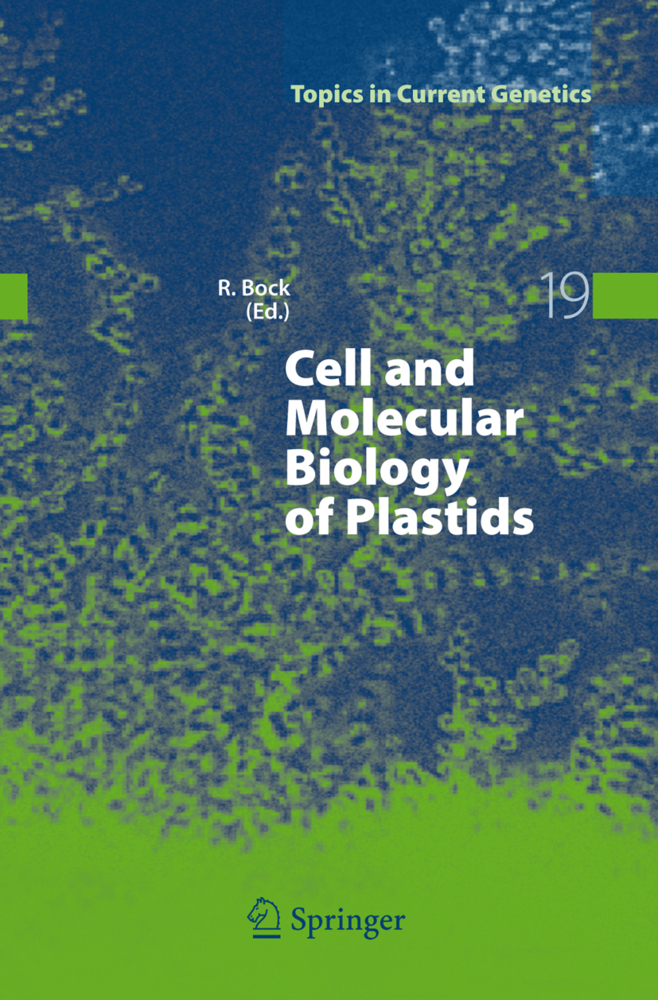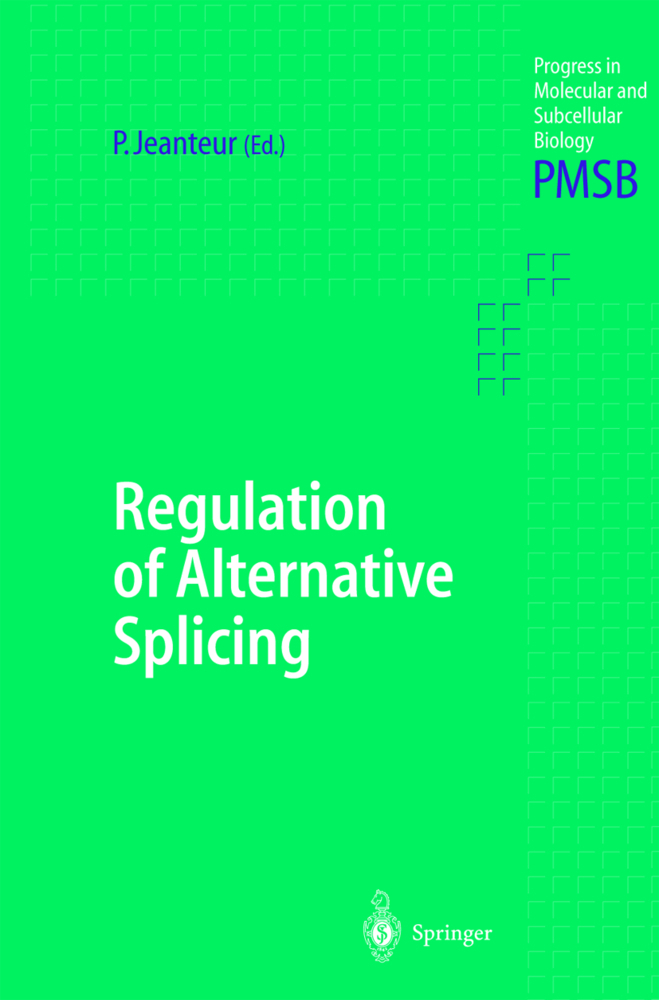Cytoplasmic fate of messenger RNA
Cytoplasmic fate of messenger RNA
Among all cellular RNA species of the three main types, ribosomal RNA, transfer RNA or messenger RNA, be they from prokaryotic or eukaryotic organisms, the prokaryotic mRNA is unique in that it has no precursor and is synthesized in the same mature form as it is translated into proteins. In fact, ribosomes join the nascent mRNA chain and engage in protein synthesis long before its transcription is complete. Provisions are even made for slowing down the ribo somes at some sites to prevent them from catching up with the RNA-polymerase. Of course, such a situation is only possible in the prokaryotic world where there is no such thing as a nuclear mem brane physically secluding the transcription process from the cy toplasm where translation is restricted. Quite in the opposite extreme, the eukaryotic pre-messenger RNA has to suffer many and sometimes drastic steps of maturation (capping, polyadenylation, splicing, edition) before the decision is made to export it to the cytoplasm. That is where it enters the scope of this book. Once in the cytoplasm, many options are still open to it: its entrance into polysomes may be delayed (as it is in unfertilized eggs) or merely prohibited (ferritin mRNA in iron-starved cells), directed to specific locations within the cytoplasm or be more or less rapidly degraded. During gametogenesis and early development, translational control is probably the most significant level of gene expression.
2 TOP Genes and TOP mRNAs
3 Phenomenology of the Translational Regulation of TOP mRNAs
4 Some Features of TOP mRNA and of Its Translational Regulation
5 Mechanism of Translational Regulation of TOP mRNAs
References
RNase L: Effector Nuclease of an Activatable RNA Degradation System in Mammals
1 Introduction
2 The Interferons
3 The 2-5A Pathway
4 RNase L
5 RLI
6 Conclusion
References
3´ Untranslated Regions of c-myc and c-fos mRNAs: Multifunctional Elements Regulating mRNA Translation, Degradation and Subcellular Localization
1 c-fos and c-myc mRNA Degradation and Translation
2 Localization of mRNAs in the Cytoplasm and Their Association with the Cytoskeleton
3 Summary and Future Perspectives
References
Cell-Free Systems for Analysis of Cytoplasmic mRNA Turnover
1 Introduction
2 mRNA Decay in Lower Eukaryotes
3 Viral Induction of mRNA Decay
4 mRNA Stability in Plants
5 Xenopus
6 Chicken
7 Mammalian mRNA Turnover
8 Conclusion
References
Mechanisms for Posttranscriptional Regulation by Iron-Responsive Elements and Iron Regulatory Proteins
1 Introduction
2 The Iron-Responsive Element (IRE): A Cis -Regulatory RNA Element
3 Iron-Regulatory Proteins (IRPs)
4 Translational Control of IRE Containing RNAs by IRE/IRP Interactions in the 5´UTR
5 Control of Transferrin Receptor mRNA Stability by IRE/IRP Interactions in the 3´UTR
6 "Iron-Responsive" Elements Also Respond to Other Cellular Signals
7 Summary and Perspectives
References
Interaction Between Iron-Regulatory Proteins and Their RNA Target Sequences, Iron-Responsive Elements
1 Introduction
2 Biochemistry of IRP-1
3Evidence for a Second IRE-Binding Protein
4 Characterisation of IRP-2
5 Sequence and Structure of Iron-Responsive Elements
6 Role of IRE Loop Structure in Protein Recognition..
7 IRP-1 and IRP-2 Bind Distinct Sets of RNA Targets
8 Summary
References
Cytoplasmic Fate of Eukaryotic mRNA: Identification and Characterization of AU-Binding Proteins
1 Introduction
2 Stable mRNAs
3 Unstable mRNAs
4 Cis -Acting Elements
5 Translational Dependence of ARE-mediated mRNA Turnover
6 Poly(A) Shortening in ARE mRNA Decay
7 Subcellular Localization of mRNA Decay
8 How Might the ARE Be Recognized?
9 Trans -Acting Factors
10 Functions
11 Posttranslational Modifications
12 Purification
13 Cloning
14 Sequence Information
15 ARE-Mediated Decay Model
References
Translational Control by Polyadenylation During Early Development
1 Introduction
2 Biological Importance of Translational Control in Development
3 Translational Repression in Oocytes
4 Control of Polyadenylation During Oocyte Maturation
5 Control of Polyadenylation in Eggs and Embryos
6 Conclusion
References
Function and Characterization of Poly(A)-Specific 3´ Exoribonucleases
1 Introduction
2 Biochemistry of mRNA Polyadenylation
3 The Functional Importance of RNA Poly(A) Tails ..
4 Poly(A)-Specific 3´ Exoribonucleases
5 Regulation of Poly (A) Tail Shortening
6 Summary and Perspectives
References.
TOP Genes: A Translationally Controlled Class of Genes Including Those Coding for Ribosomal Proteins
1 Introduction2 TOP Genes and TOP mRNAs
3 Phenomenology of the Translational Regulation of TOP mRNAs
4 Some Features of TOP mRNA and of Its Translational Regulation
5 Mechanism of Translational Regulation of TOP mRNAs
References
RNase L: Effector Nuclease of an Activatable RNA Degradation System in Mammals
1 Introduction
2 The Interferons
3 The 2-5A Pathway
4 RNase L
5 RLI
6 Conclusion
References
3´ Untranslated Regions of c-myc and c-fos mRNAs: Multifunctional Elements Regulating mRNA Translation, Degradation and Subcellular Localization
1 c-fos and c-myc mRNA Degradation and Translation
2 Localization of mRNAs in the Cytoplasm and Their Association with the Cytoskeleton
3 Summary and Future Perspectives
References
Cell-Free Systems for Analysis of Cytoplasmic mRNA Turnover
1 Introduction
2 mRNA Decay in Lower Eukaryotes
3 Viral Induction of mRNA Decay
4 mRNA Stability in Plants
5 Xenopus
6 Chicken
7 Mammalian mRNA Turnover
8 Conclusion
References
Mechanisms for Posttranscriptional Regulation by Iron-Responsive Elements and Iron Regulatory Proteins
1 Introduction
2 The Iron-Responsive Element (IRE): A Cis -Regulatory RNA Element
3 Iron-Regulatory Proteins (IRPs)
4 Translational Control of IRE Containing RNAs by IRE/IRP Interactions in the 5´UTR
5 Control of Transferrin Receptor mRNA Stability by IRE/IRP Interactions in the 3´UTR
6 "Iron-Responsive" Elements Also Respond to Other Cellular Signals
7 Summary and Perspectives
References
Interaction Between Iron-Regulatory Proteins and Their RNA Target Sequences, Iron-Responsive Elements
1 Introduction
2 Biochemistry of IRP-1
3Evidence for a Second IRE-Binding Protein
4 Characterisation of IRP-2
5 Sequence and Structure of Iron-Responsive Elements
6 Role of IRE Loop Structure in Protein Recognition..
7 IRP-1 and IRP-2 Bind Distinct Sets of RNA Targets
8 Summary
References
Cytoplasmic Fate of Eukaryotic mRNA: Identification and Characterization of AU-Binding Proteins
1 Introduction
2 Stable mRNAs
3 Unstable mRNAs
4 Cis -Acting Elements
5 Translational Dependence of ARE-mediated mRNA Turnover
6 Poly(A) Shortening in ARE mRNA Decay
7 Subcellular Localization of mRNA Decay
8 How Might the ARE Be Recognized?
9 Trans -Acting Factors
10 Functions
11 Posttranslational Modifications
12 Purification
13 Cloning
14 Sequence Information
15 ARE-Mediated Decay Model
References
Translational Control by Polyadenylation During Early Development
1 Introduction
2 Biological Importance of Translational Control in Development
3 Translational Repression in Oocytes
4 Control of Polyadenylation During Oocyte Maturation
5 Control of Polyadenylation in Eggs and Embryos
6 Conclusion
References
Function and Characterization of Poly(A)-Specific 3´ Exoribonucleases
1 Introduction
2 Biochemistry of mRNA Polyadenylation
3 The Functional Importance of RNA Poly(A) Tails ..
4 Poly(A)-Specific 3´ Exoribonucleases
5 Regulation of Poly (A) Tail Shortening
6 Summary and Perspectives
References.
Jeanteur, Philippe
| ISBN | 978-3-642-64420-7 |
|---|---|
| Artikelnummer | 9783642644207 |
| Medientyp | Buch |
| Auflage | Softcover reprint of the original 1st ed. 1997 |
| Copyrightjahr | 2011 |
| Verlag | Springer, Berlin |
| Umfang | XVI, 224 Seiten |
| Abbildungen | XVI, 224 p. |
| Sprache | Englisch |

